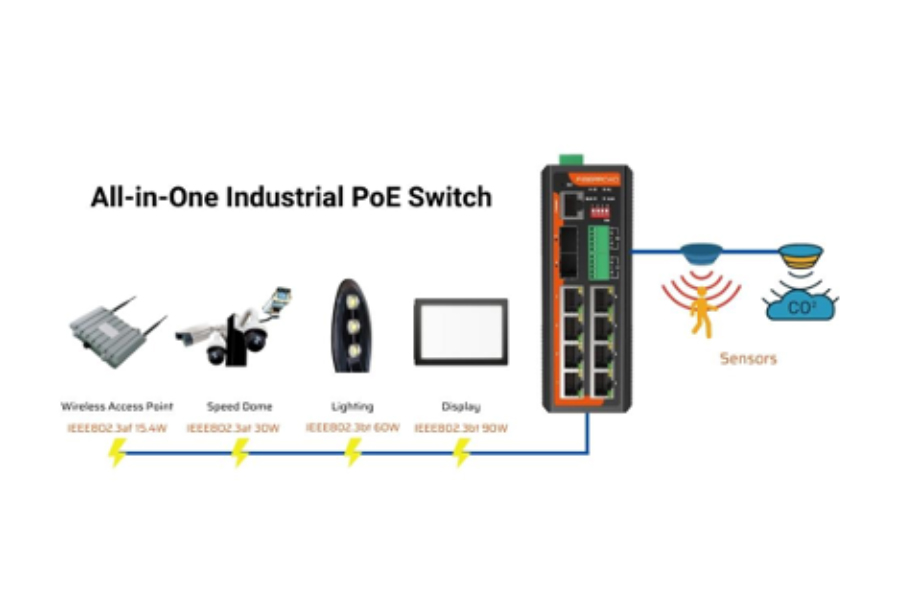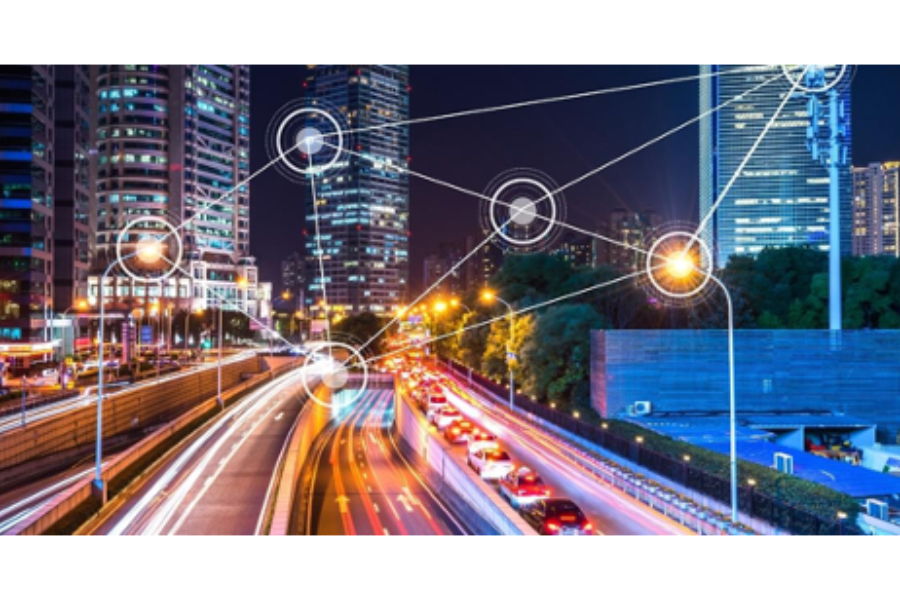By Phillip Dodd, Technology Lead IIoT Engineering Infrastructure & Security, Fiberroad Technology
Using IIoT to improve smart street illumination systems has many advantages, including reduced energy consumption during the day, a flexible system that can adjust to changing weather conditions, and more efficient data collection. With these benefits, city planners can optimize their light systems and expand them to new locations. Smart street lighting systems use IoT-based communication, creating a secure and digitally monitored network. In addition, they include smart sensors that monitor air pollution levels and lamppost inclination.
What Is A Smart Street Lighting System?
Smart street lighting systems are an increasingly important part of the future of cities. These systems incorporate real-time monitoring and connectivity capabilities into streetlights, enabling them to be integrated into a broader management system. This technology helps municipalities optimize lighting services, reduce energy consumption, and improve safety and efficiency. Smart lighting systems can also help improve traffic safety and reduce pollution. To learn more about smart street lighting systems, keep reading.
The basic concept behind a smart street lighting system is based on sensors. Sensors located throughout a street can detect objects, such as pedestrians or cars. The system can also provide information about temperature and humidity. Once the system is installed, the lights can be connected to a base station, which stores energy. This way, a city can see the energy that is being consumed while still providing the necessary illumination.
Challenges Facing The Operation Of Smart Street Lighting Systems
While the benefits of smart street lighting systems are many, they do come with certain challenges. One of the main challenges is privacy. The public is concerned about privacy, which can limit the scope of smart lighting initiatives.
Some cities have already embraced smart street lighting. Some have implemented an intelligent street lighting program, this project included a participatory planning process and has received widespread support from local citizens. However, cities with tight spending budgets may be hesitant to invest in smart street lighting systems, as the initial costs are sunk.
Why Does IIoT Benefit Smart Street Lighting System
The use of a smart street lighting system offers numerous advantages, such as increased visibility and customized dimming. It can also be customized for different situations, such as when fog is present. Moreover, it can be a great help to emergency services. Smart street lighting systems can detect a variety of emergencies, from gas leaks to gunshots or chemical warfare. Therefore, they can help reduce traffic accidents and keep communities safe.
The IoT technology helps cities save money on energy by adjusting street lighting according to the conditions. Smart street lights also provide detailed data for city planners. This data can also be used to expand their light systems, as well as make adjustments based on weather conditions. Furthermore, IIoT-based communication helps these devices operate in a secure and digitally monitored network. In addition, smart sensors can be installed in street lights to measure air pollution levels.
Why Is MQTT A Wise Choice For IIoT?
MQTT (Message Queuing Telemetry Transport) is a protocol that allows multiple devices to exchange data with one another. Its simplicity and secure nature make it an excellent choice for IoT applications. Its publish-subscribe communication model is also ideal for remote environments and devices that have limited bandwidth or power.
It works by broadcasting a message when a certain event occurs and a subscribed device listens for it. This eliminates the need to continuously poll the device. Messages are also sent in a single packet and can be up to 256 MB long. This protocol has the potential to connect thousands of devices, and it is suitable for both consumer electronics and industrial applications.
Another advantage of MQTT is that it is lightweight compared to HTTP, making it a better choice for IoT devices. The header of the HTTP protocol is typically 8000 bytes, whereas the header of the MQTT protocol is only 2 bytes long. MQTT is therefore suitable for IoT applications in which latency or speed is not important, but the protocol is too resource-intensive for some lightweight devices.
Industrial PoE Switch Plays A Key Role In Industrial Ethernet And Smart Street Lighting System
Industrial PoE switches play an important role in Industrial Ethernet. This technology helps eliminate the need for many separate power cables in an industrial environment. This reduces the heat generated and the signal degradation that occurs with twisted pairs in Ethernet. It also improves the efficiency of carrying power to industrial equipment.
Industrial PoE switches play a critical role in smart street lighting, where they provide power for smart street lights. The switches can be used to provide power to multiple devices simultaneously, and they can also control and monitor cameras remotely. This functionality helps save time and money, and it helps administrators manage power consumption.
PoE switches also support IP cameras. These cameras can be installed in difficult areas, and PoE switches help make the installation process much easier. They save time and money by eliminating the need for electricians. They also improve security. With these switches, you can ensure the safety of people and property.

Advantages Of Industrial PoE Switch
An industrial PoE Switch has numerous benefits, especially for lighting systems. For one, the switch is a robust piece of equipment designed for harsh operating conditions. For example, an industrial PoE switch is built to withstand temperature extremes and meet rigorous standards. It also supports multiple MAC addresses and allows power to be distributed to several devices at one time. Its other benefits include its ability to extend Ethernet to far-flung locations and support both PoE and non-PoE lighting systems.
Another significant advantage is that it helps cut energy costs. PoE systems are flexible and can be moved from one location to another without shutting down entire areas. This feature is particularly valuable when lighting systems are relocated to new locations or require replacements. Furthermore, PoE systems can be remotely controlled. This makes them ideal for cities and other public spaces. These advantages also make it possible to customize lighting systems and provide additional security measures.

